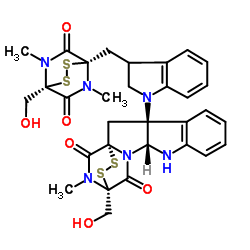TLR2 and TLR4 agonists induce production of the vasoactive peptide endothelin-1 by human dendritic cells.
Rolf Spirig, Inga Potapova, Jane Shaw-Boden, Janice Tsui, Robert Rieben, Sidney G Shaw
文献索引:Mol. Immunol. 46(15) , 3178-82, (2009)
全文:HTML全文
摘要
Endothelin-1 (ET-1) is mainly secreted by endothelial cells and acts as a potent vasoconstrictor. In addition ET-1 has also been shown to have pleiotropic effects on a variety of other systems including adaptive immunity. There are two main ET-1 receptors, ET(A) and ET(B), which have different tissue and functional distributions. Dendritic cells (DC) are pivotal antigen-presenting cells linking the innate with the adaptive immune system. DC are sentinels expressing pattern-recognition receptors, e.g. the toll-like receptors (TLR) for detecting danger signals released from pathogens or tissue injury. Here we show for the first time that stimulation of human monocyte-derived DC with exogenous as well as endogenous selective TLR4 and TLR2 agonists induces the production of ET-1 in a dose- and time-dependent manner. 'Alternative' activation of DC in the presence of 1alpha,25-dihydroxyvitamin D(3) results in a marked potentiation of the endothelin response, whereas prostaglandin E(2) or dexamethasone do not increase ET-1 production. Furthermore, chetomin, an inhibitor of the transcription factor hypoxia-inducible factor 1alpha (HIF-1alpha), prevents TLR-mediated secretion of ET-1. Surprisingly, stimulation of human monocytes with LPS does not lead to secretion of detectable amounts of ET-1. These results suggest a role of ET-1 as an important player in human DC biology and innate immunity in general.
相关化合物
| 结构式 | 名称/CAS号 | 分子式 | 全部文献 |
|---|---|---|---|
 |
毛壳菌素
CAS:1403-36-7 |
C31H32N6O6S4 |
|
Inhibition of histone H3K9 methyltransferases by gliotoxin a...
2012-05-01 [J. Antibiot. 65(5) , 263-5, (2012)] |
|
Role of hypoxia and autophagy in MDA-MB-231 invasiveness.
2010-05-01 [J. Cell Physiol. 223(2) , 359-68, (2010)] |
|
Inhibition of hypoxia inducible factor 1-transcription coact...
2010-01-27 [J. Am. Chem. Soc. 132(3) , 941-3, (2010)] |
|
Epidithiodiketopiperazines block the interaction between hyp...
2009-09-25 [J. Biol. Chem. 284(39) , 26831-8, (2009)] |
|
Analysis of epipolythiodioxopiperazines in fungus Chaetomium...
2008-01-01 [Anal. Chem. 80(1) , 217-26, (2008)] |